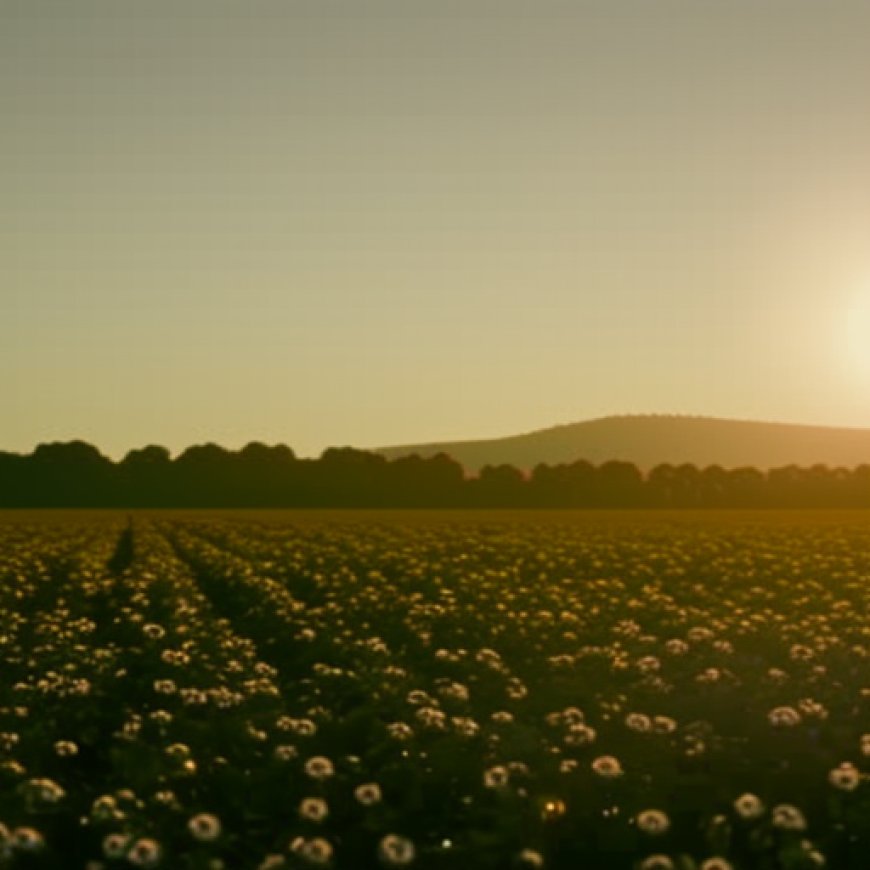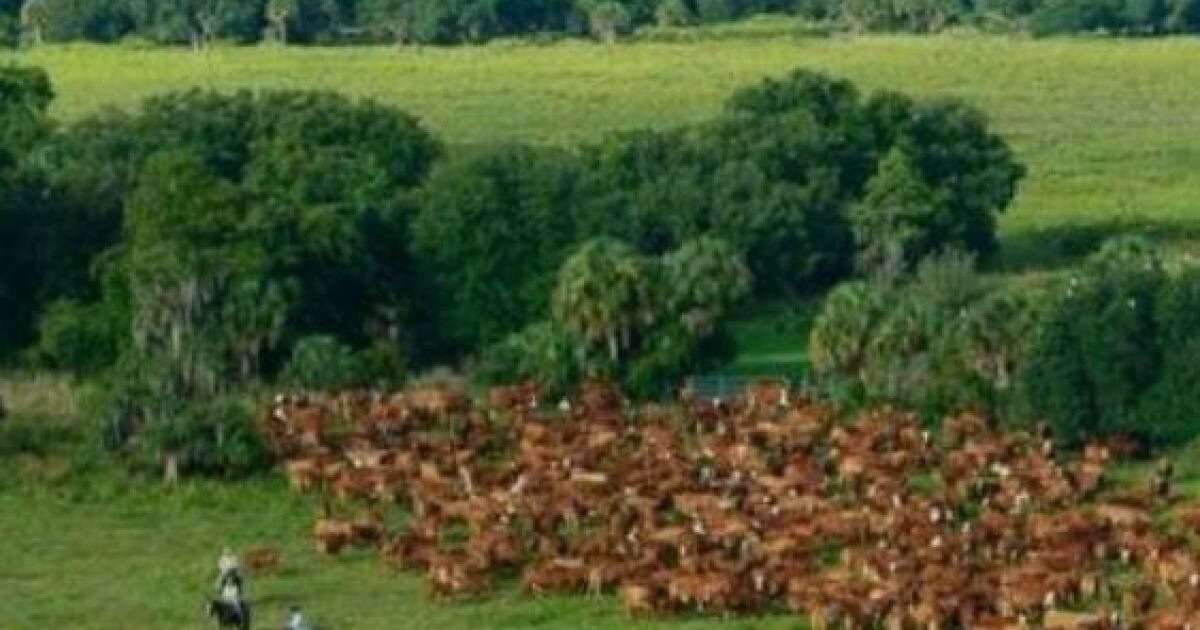State-funded rural land program draws more than 180 applicants
State-funded rural land program draws more than 180 applicants news.wgcu.org


More than 180 Landowners Apply for Rural and Family Lands Protection Program

TALLAHASSEE — More than 180 landowners have applied to a state-funded program — a target of Gov. Ron DeSantis’ veto pen — designed to keep swaths of rural property from commercial and residential development.
The state Department of Agriculture and Consumer Services announced Friday it will quickly start to rank the proposals that collectively seek to cover more than 200,000 acres through the Rural and Family Lands Protection Program. The deadline to apply for the program was Thursday.
The program puts land into conservation easements, allowing landowners to continue farming and cattle operations in exchange for not developing the property.
Emphasis on Sustainable Development Goals (SDGs)
- Goal 11: Sustainable Cities and Communities
- Goal 12: Responsible Consumption and Production
- Goal 15: Life on Land
In a press release, Agriculture Commissioner Wilton Simpson said the proposals exceed the available funding, “which I will work to correct this coming legislative session.”
Simpson in June opened the first application cycle for the program, which was created in 2001, since 2017, according to the release. The Legislature appropriated $300 million for the program last year, but only about $50 million of the funds were spent.
Final spending by the state for the program requires approval from the governor and Cabinet, which in May approved $57.6 million to place 18,279 acres in St. Lucie, DeSoto, Walton, Hardee, Polk, Highlands and Charlotte counties into conservation easements.
DeSantis, who is running for president, in June vetoed an additional $100 million the Legislature earmarked for the program this year. The veto comprised nearly one-fifth of DeSantis’ cuts from the budget for the fiscal year that began July 1. The governor’s office has pointed to money being available from the prior fiscal year for the program.
Former President Donald Trump has raised the veto as a way to attack DeSantis, as the Republican candidates campaign in Iowa.
“Ron DeSanctimonious would be a COMPLETE DISASTER for American Farmers and the people of Iowa!” Trump posted on his Truth Social platform, along with a video attacking DeSantis’ action.
During an appearance earlier this month on the “Deeper Dive with Dara Kam” podcast, Simpson also questioned DeSantis’ veto.
Simpson, who served for two years as Senate president prior to his election as agriculture commissioner in November, noted that the Legislature set aside billions of dollars in reserves in this year’s $117 billion state budget. The reserves built on funds amassed under Simpson’s tenure, he said.
“We left over $22 billion in reserves,” Simpson said. “I didn’t see where the $100 million would have made that big a difference on a $117 billion budget.”
Simpson also said DeSantis’ veto could delay efforts to keep 40,000 to 60,000 acres of agricultural land from development and potentially impact future acquisition efforts as land prices rise.
“We were very proud two or three or four years ago to put $200 (million) or $300 million in some of these Florida Forever (land acquisition) programs. And if the money’s still sitting there — and in a lot of cases it is — now we only get about half of our value for that money,” Simpson said during the podcast appearance. “So, I think it’s important to the government — and in my agency of the Department of Agriculture — we’re going to have a process in place. … If the Legislature appropriates the dollars, we can spend them in real time.”
Simpson also views the program as helping to connect lands for the burgeoning Florida Wildlife Corridor.
“Your farmers not only produce your food and fiber, the most safe, affordable, abundant food anywhere in the world, but we are the first environmentalists,” Simpson said. “It is incumbent upon our farming community to take care of these properties. And again, I will go back and say I believe the farming community does a substantially better job than our state resources do and at a far better value to our taxpayer.”
The corridor, which received $850 million in the current fiscal year budget, is envisioned as connecting 18 million acres of land from the Florida Keys to the Panhandle.
About 8 million of those acres need to be secured, with a goal of 900,000 acres added by the end of this decade.
A bill signed by DeSantis earlier this year (SB 106) directs an additional $200 million to expand Florida’s Greenways and Trails System and the SUN Trail Network into the wildlife corridor.
SDGs, Targets, and Indicators in the Article
1. Which SDGs are addressed or connected to the issues highlighted in the article?
- SDG 15: Life on Land
- SDG 2: Zero Hunger
- SDG 11: Sustainable Cities and Communities
The article discusses the Rural and Family Lands Protection Program, which aims to conserve rural property and protect agricultural land. This aligns with SDG 15, which focuses on preserving and restoring terrestrial ecosystems and promoting sustainable land use. The program also supports SDG 2 by ensuring the availability of safe and nutritious food through the continuation of farming and cattle operations. Additionally, the program contributes to SDG 11 by promoting sustainable communities and preventing excessive commercial and residential development in rural areas.
2. What specific targets under those SDGs can be identified based on the article’s content?
- Target 15.1: By 2020, ensure the conservation, restoration, and sustainable use of terrestrial and inland freshwater ecosystems and their services.
- Target 2.4: By 2030, ensure sustainable food production systems and implement resilient agricultural practices that increase productivity and production.
- Target 11.3: By 2030, enhance inclusive and sustainable urbanization and capacity for participatory, integrated, and sustainable human settlement planning and management in all countries.
The article highlights the efforts of the Rural and Family Lands Protection Program to conserve rural property through conservation easements. This aligns with Target 15.1 of SDG 15, which aims to ensure the conservation and sustainable use of terrestrial ecosystems. The continuation of farming and cattle operations also contributes to Target 2.4 of SDG 2, which focuses on sustainable food production systems. Furthermore, the program’s goal of preventing excessive development in rural areas supports Target 11.3 of SDG 11, which aims to enhance sustainable urbanization and human settlement planning.
3. Are there any indicators mentioned or implied in the article that can be used to measure progress towards the identified targets?
- Indicator 15.1.1: Forest area as a proportion of total land area.
- Indicator 2.4.1: Proportion of agricultural area under productive and sustainable agriculture.
- Indicator 11.3.1: Ratio of land consumption rate to population growth rate.
The article does not explicitly mention specific indicators, but the conservation of rural property and agricultural land can be measured using Indicator 15.1.1, which assesses the forest area as a proportion of total land area. The continuation of farming and cattle operations can be evaluated using Indicator 2.4.1, which measures the proportion of agricultural area under productive and sustainable agriculture. The prevention of excessive development can be monitored using Indicator 11.3.1, which examines the ratio of land consumption rate to population growth rate.
SDGs, Targets, and Indicators Table
| SDGs | Targets | Indicators |
|---|---|---|
| SDG 15: Life on Land | Target 15.1: By 2020, ensure the conservation, restoration, and sustainable use of terrestrial and inland freshwater ecosystems and their services. | Indicator 15.1.1: Forest area as a proportion of total land area. |
| SDG 2: Zero Hunger | Target 2.4: By 2030, ensure sustainable food production systems and implement resilient agricultural practices that increase productivity and production. | Indicator 2.4.1: Proportion of agricultural area under productive and sustainable agriculture. |
| SDG 11: Sustainable Cities and Communities | Target 11.3: By 2030, enhance inclusive and sustainable urbanization and capacity for participatory, integrated, and sustainable human settlement planning and management in all countries. | Indicator 11.3.1: Ratio of land consumption rate to population growth rate. |
Behold! This splendid article springs forth from the wellspring of knowledge, shaped by a wondrous proprietary AI technology that delved into a vast ocean of data, illuminating the path towards the Sustainable Development Goals. Remember that all rights are reserved by SDG Investors LLC, empowering us to champion progress together.
Source: news.wgcu.org

Join us, as fellow seekers of change, on a transformative journey at https://sdgtalks.ai/welcome, where you can become a member and actively contribute to shaping a brighter future.







